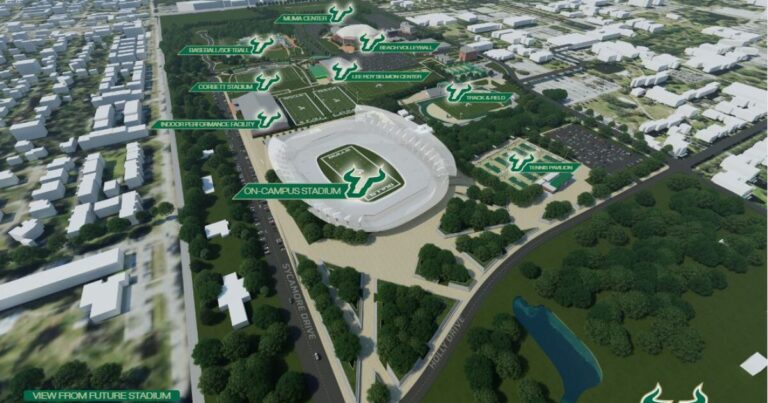When you think of sports tourism, you might think of trips to the Olympics or, more recently, Taylor Swift and her crew touring NFL stadiums.
But sports tourism is much more than that. Everything from kayaking trips to family vacations to children’s soccer tournaments is possible.
And it all can have a huge impact on the environment.
That’s why Brooke Hansen, an associate professor at the University of South Florida’s Muma College of Business, specializes in sports tourism and sustainability.
Hansen says he will soon need to take control of Florida’s burgeoning industry.
“Sports tourism can also be traveling to get training for different sports. You can also go to a golf camp somewhere. That’s sports tourism. You can also go hiking, cycling, kayaking, windsurfing. You can also travel to do things, and that’s all sports tourism.” That’s why sports tourism, from that perspective, accounts for as much as 25% of all tourism, and the amount is huge, tens of thousands of dollars. Billion dollars and millions of people.
Mr. Hansen also discussed other topics, including how the state can manage population growth given its rapid population growth.
Florida’s springs are amazing. You can’t send everyone there without a plan. And Hawaii currently has capacity. If hundreds of people gather in a park or grounds, it will be closed and people will not be allowed inside until others come out. This has been going on forever in Costa Rica. When I went to the very popular Monteverde Cloud Forest, I found that only about 250 people were allowed to enter each day.
Brooke Hansen, Associate Professor, USF Muma College of Business
How does Florida manage this?
Recently, I’ve taken it to the next level. Pasco County also labels itself the Sports Coast, which is a very smart marketing opportunity to promote skating, scalloping, and ecotourism. So it’s very interesting that Pasco decided to do that. And it was a great success.

What’s the downside to that huge success?
In general, the downside to the huge success of Florida tourism is its own success. 137 million people visit Florida. And then there’s the desire to make Florida a top destination in the world. So my question is always, where do we put these people? Because many of us who live here cannot go to destinations such as the beach due to traffic jams and overcrowding. Therefore, we need to move further into the mode of destination management.
In my experience, I go to Crystal River by kayak etc. or go to Weeki Wachee. That kind of thing can be stressful.
Florida’s springs are amazing. You can’t send everyone there without a plan. And Hawaii currently has capacity. If hundreds of people gather in a park or grounds, it will be closed and people will not be allowed inside until others come out. This has been going on forever in Costa Rica. When I went to the very popular Monteverde Cloud Forest, I found that only about 250 people were allowed to enter each day.
Who is in charge of managing it? Is it local, county, state? Who is doing something along those lines now?
In other parts of the world, ministries of tourism are working with ministries of the environment to do just that. We don’t have a Ministry of Tourism. So who is our state’s tourism manager? I’m a sustainable tourism specialist, helping everyone understand how we’re transforming the world’s largest industry into sustainability. We are supporting. And that’s how we make a global impact. That’s my passion. That’s how I ended up joining the Sustainability Committee for Super Bowl 55 here in Tampa. The recycling program for Super Bowl 55 was amazing. We were able to salvage many items, including carpet scraps, and donate them to non-profit organizations. And we know we’re building a new stadium at USF. And I’m giving it some time before I stick my nose into it and make sure we’re building a LEED certified stadium. And I’m going to pick up the phone right away and start pestering people to make sure they’re making a statement about sustainability in their new stadium.
